Christmas Quiz: Questions and Answers
1. What physical evidence do we have that celebrations took place in late December long before the birth of Jesus Christ?
The main evidence for this is the people who built and used Stonehenge, with its tallest stone lining up with sunrise on the "midwinter solstice" on 21 December. Archaeologists working on the site have discovered that "Neolithic" (New Stone Age) people held great feasts there at around this time of year.
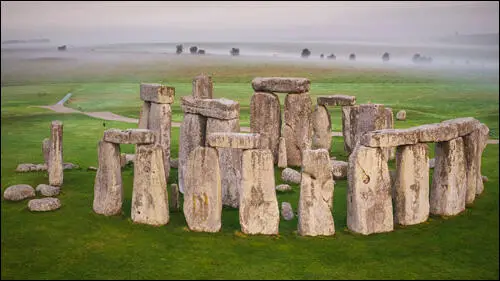
2. Why did Roman slaves enjoy celebrations every December?
The Romans celebrated midwinter with several days of feasting and partying called Saturnalia, which began on 17 December. The main objective of these activities was the honouring of Saturn, chief of the Roman gods. During the holiday period the usual rules concerning rank were overturned and slaves got time off. Slaves were served at meals by their masters and everyone wore a pileus, a brimless, felt cap, presented to slaves when they were freed. Gambling, usually forbidden, was allowed, and instead of white togas or dresses everyone wore bright party clothes.
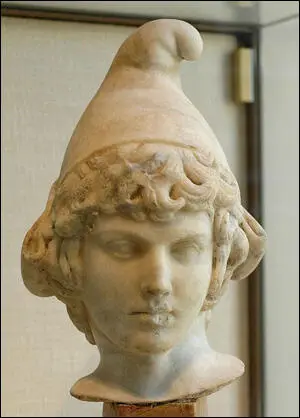
3. Why is the exchanging of gifts one of the core aspects of the modern Christmas celebration?
On Christmas Day people exchange gifts based on the Christian tradition associated with the gifts of gold, frankincense, and myrrh which were given to the baby Jesus by the Magi (Wise Men).
Historians have pointed out that Christmas presents date back to early Christian rulers who believed that their subjects should give gifts to their superiors and insisted on tributes and tithes during the Christmas period. Christmas gift-giving to superiors became less common, and around the time of the Protestant Reformation, bestowing presents on children became increasingly widespread in Europe.
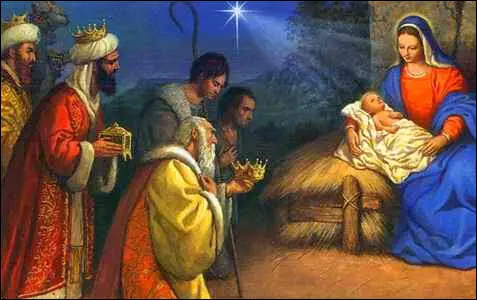
4. What is the connection between Christmas and Yuletide?
Both Christmas and Yuletide were mid-winter events. Yuletide was a feast held by Pagan German tribes.
5. What was Braggot?
Braggot was extra-strong ale with honey and cinnamon, spiked with brandy. It was drunk by the German tribes during Yuletide.
6. A popular game played in the Middle Ages during the Christmas period was called "Hot Cockles". Explain the rules of this game?
Hot Cockles involved a blind-folded victem who had to guess who'd slapped them from behind. If the guess was right, the slapper became the victim.
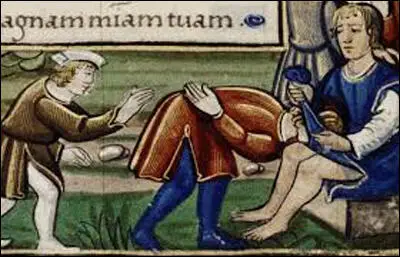
7. What is the meaning of "Christmas" and when was the word first used?
During the Middle Ages people used to fast right up until 24 December. They then would have twelve full days of Christmas festivities, reaching a crescendo on 6th January (Twelfth Night), when presents were exchanged. These celebrations commemorated Christ's birth and the name Christmas (Christ's Mass) is first recorded in England in 1038.
8. What does the word "carol" mean?
The word "carol" means a dance or a song of praise and joy.
9. When were carols first sung in Europe?
Carols were first sung in Europe thousands of years ago. They were pagan songs, sung at the Winter Solstice celebrations as people danced round stone circles.
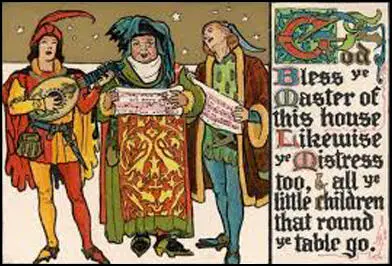
10. What role did St. Francis of Assisi play in reviving Christmas activities?
Christmas festivities were revived by St. Francis of Assisi when, and ritual surrounding the Winter in 1223, he started his Nativity Plays in Italy. The people in the plays sang songs or "canticles" that told the story during the plays. Sometimes, the choruses of these new carols were in Latin; but normally they were all in a language that the people watching the play could understand and join in. These new carols gradually spread to other European countries.
11. What date were Christmas carols in English first published in Britain?
Christmas carols in English first appeared in a 1426 work of John Awdlay, a Shropshire chaplain. The songs now known specifically as carols were originally communal songs sung during celebrations like harvest tide as well as Christmas. It was only later that carols began to be sung in church, and to be specifically associated with Christmas.
12. In what century did people first put up special decorations at Christmas.
The first evidence of this happening was in the 15th century. It was recorded that in London it was the custom at Christmas for every house and all the parish churches to be "decked with holm, ivy, bays, and whatsoever the season of the year afforded to be green". The heart-shaped leaves of ivy were said to symbolize the coming to earth of Jesus, while holly was seen as protection against pagans and witches, its thorns and red berries held to represent the Crown of Thorns worn by Jesus at the crucifixion and the blood he shed. The first commercially produced decorations appeared in Germany in the 1860s.
13. What was the name the religious group that first introduced the idea of the Christmas tree?
Records show that the first Christmas tree was placed in the Cathedral of Strasbourg in 1539, under the leadership of the Protestant Reformer, Martin Bucer. Its origins date back to the pagan tradition and ritual surrounding the Winter Solstice, which included the use of evergreen boughs, and an adaptation of pagan tree worship. The English language phrase "Christmas tree" was first recorded in 1835 and represents an importation from the German language.
14. What was the name of the religious group in the 16th century that claimed Christmas festivities threatened Christian beliefs and encouraged immoral behaviour?
By the 16th century Christmas festivities were a mixture of religious traditions and excessive social behaviour. In the mid-1500s Puritan leaders and pamphleteers like Philip Stubbs began to argue that these social activities threatened Christian beliefs and encouraged immoral behaviour.
15. In what year did Parliament abolish the feasts of Christmas, Easter and Whitsun?
After the outbreak of the English Civil War the Parliamentary authorities shared the view of the Puritans that Christmas social activities threatened Christian beliefs and encouraged immoral behaviour. On 19 December 1643, an ordinance was passed encouraging subjects to treat the mid-winter period "with the more solemn humiliation because it may call to remembrance our sins, and the sins of our forefathers, who have turned this feast, pretending the memory of Christ, into an extreme forgetfulness of him, by giving liberty to carnal and sensual delights". The rejection of Christmas as a joyful period was reiterated when a 1644 ordinance confirmed the abolition of the feasts of Christmas, Easter and Whitsun.
In January 1645, Parliament produced a new Directory for Public Worship that made clear that festival days, including Christmas, were not to be celebrated but sent in respectful contemplation. From this point until the Restoration in 1660, Christmas was officially illegal. Although Cromwell himself did not initiate the banning of Christmas, his rise to power certainly resulted in the promotion of measures that severely curtailed such celebrations.
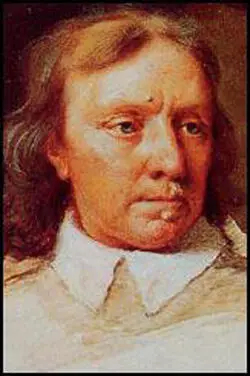
16. What event took place that convinced people that the selling of Christmas cards would be commercially successful?
In 1838, Sir Rowland Hill expounded his concept for the reformed service at a meeting on 13th February 1837 and published a famous pamphlet Post Office Reform: Its Importance and Practicability. In 1838 Hill made a proposal to Parliament in which he suggested that "postage of all letters received in a post-town, and delivered in the same, or any other post-town in the British Isles, shall be at the uniform rate of one penny per half ounce".
Hill's 1838 proposal paved the way for the 1840 Act which introduced the Uniform Penny Post. Previously, postage had depended on distance and the number of sheets of paper; now, one penny would assure delivery of an envelope and the letter it enclosed anywhere in the country provided together they satisfied the weight condition. In 1840, the first year of Penny Post, the number of letters sent in the UK more than doubled.
17. The first commercially printed Christmas card was published in 1843. Name the organisation that campaigned against the sending of this Christmas card.
The first commercially printed Christmas card was designed by the printer and illustrator John Callcott Horsley, it is believed only 1,000 of these hand-coloured lithographs were printed and sold for a shilling apiece (around 30 survived and collectors are willing to pay about £8,000 for them).
It was thought that sending of Christmas cards would quickly become a British tradition. However, this did not happen. The Temperance Society, a powerful pressure group at the time, campaigned against the publication of this card. In 1832 Joseph Livesey and seven Preston workingmen signed a pledge that they would never again drink alcohol. Other groups of working men followed the example of Livesey and his friends and by 1835 the British Association for the Promotion of Temperance was formed. It was not long before the movement was claiming over 1,000 local Temperance societies with over 100,000 members.
At first temperance usually involved a promise not to drink spirits and members continued to consume wine and beer. However, by the early 1840s temperance societies began advocating teetotalism. This was a much stronger position as it not only included a pledge to abstain from all alcohol for life but also a promise not to provide it to others.
The Temperance Society objected to the artist associated Christmas with drinking alcohol. They especially disliked the fact that the picture showed children toasting with a glass of wine along with the adults. The organization decided to mount a campaign to censor and suppress the selling of Christmas cards.
At the time it was both a religious and political movement. Nonconformist groups, notably the Methodists and Quakers lobbied parliament to restrict alcohol sales. The Church of England and the Catholic Church also joined forces with the Nonconformists in attempting to reduce the consumption of alcohol. In 1838, the mass working class movement for universal suffrage, Chartists joined the campaign against alcohol as a way of proving to the elites that working-class people were responsible enough to be granted the vote.
The Temperance Society campaign was so successful that it took three years before another Christmas card was produced.
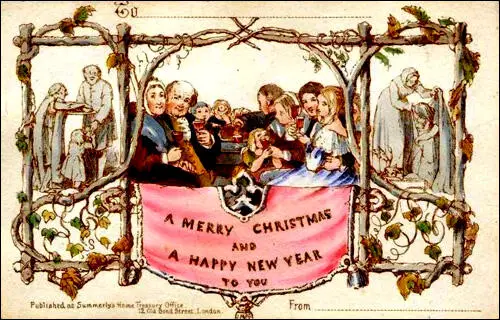
18. Why is it customary to hang a sprig of mistletoe in the house at Christmas, and anyone standing underneath it may be kissed?
Mistletoe is a plant that grows on range of trees including willow, apple and oak trees. The tradition of hanging it in the house goes back to the times of the ancient Druids. It is supposed to possess mystical powers which bring good luck to the household and wards off evil spirits. It was also used as a sign of love and friendship in Norse mythology. It was probably part of a fertility ritual as the mistletoe berry juice resembles semen.
19. What was the name of the Queen who brought the custom from Germany of having Christmas trees in the house?
The custom of having Christmas trees was introduced to Britain, first via Queen Charlotte, wife of George III, and then more successfully by Prince Albert during the reign of Queen Victoria. By 1841 the Christmas tree has become even more widespread throughout Britain.
20. In what year was the term "Christmas Pudding" used?
The cook Eliza Acton was the first to refer to it as "Christmas Pudding" in her bestselling 1845 book Modern Cookery for Private Families.
